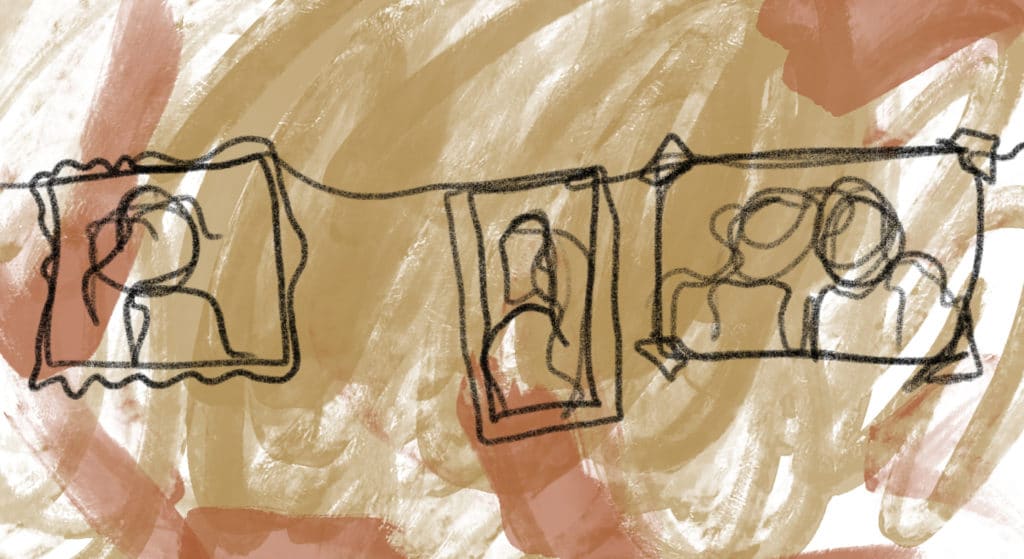
James Finley encourages each of us to continue on the contemplative path:
Through our renewed fidelity to our contemplative practices we learn to discern and take steps to correct any tendencies to drag around dust-gathering trophies of things past…. Sitting silent and still in meditation, walking with attentive gratitude at sunset, reaching out to cup the beloved’s face in our hands, we find ourselves once again at the never ending origins of the one unending present moment in which our lives unfold.
We know by experience that in a relative, but very real sense, we are the arbiters of our journey, that we must take responsibility to cooperate with the grace of being faithful to our contemplative practices. If we do not meditate there will be no meditation in our lives. If we do not patiently work through the obstacles encountered along the way, we can lose our way and lose ourselves in the process. But at a deeper level, the entire journey is one in which we are called over and over again to surrender to a self-transforming process not of our own making. Each time we give ourselves over to our contemplative practices, whatever they might be, we find ourselves, once again, one with the communal mystery in which there is no separate self. [1]
Finley reminds us that solitary contemplative paths simultaneously invite us to respond with compassion to real world needs:
Let me emphasize … the need to discern and take steps to correct the ways in which our contemplative self-transformation is hindered by our failures to compassionately love others. Ideally speaking, a commitment to contemplative living is synonymous with a heightened awareness of and response to the real suffering of real people. The difficulty however, is that our own wounded ego can circle about contemplative experiences in ways that make us less, not more sensitive to our own real needs and the needs of those around us. Religious faith, artistic inspiration, romantic-sexual love, the process of psychological healing, and all other arenas of contemplative experience and self-transformation, can and should be arenas of heightened compassionate sensitivity to the real needs of those around us….
Contemplative wisdom discerns that we hinder ourselves in our ongoing self-transformation when we catch ourselves expounding, through clenched teeth, the principles of a dance that our own self-absorbed rigidity will not let us dance. But no matter how foolish and broken we may be, compassionate love is always ready to drain the fear-based rigidity out of the situation to the point that we might begin to recognize our ever present invitation to join in the general dance of God, one with us in our brokenness. The dance never ceases to stir within us, beating “in our very blood whether we want it to or not.” [2] The dance is deathless, childlike, and free; an infinite Presence wholly poured out in and as the concrete immediacy of who we simply are, beyond grasping in any way whatsoever. [3]
Reference:
[1] James Finley, The Contemplative Heart (Notre Dame, IN: Sorin Books, 2000), 207.
[2] Thomas Merton, New Seeds of Contemplation (Norfolk, CT: New Directions, 1961), 297.
[3] Finley, Contemplative Heart, 214, 219.
Image credit: A path from one week to the next—Taylor Wilson, Ruah (detail), print. Izzy Spitz, Chemistry of Self 3 (detail), digital oil pastels. Izzy Spitz, momentary peace (detail), digital oil pastels. Used with permission. Click here to enlarge image.
Like this simple shape, the contemplative heart is found in the simplicity of everyday life.
Story from Our Community:
After starting a deeply spiritual journey 15 years ago, I often feel that I have no idea where my life is leading me. My commitment to a daily practice is just about the only thing I’m sure of these days. I get direction each morning from the Daily Meditations, and it amazes me that the Spirit seems to send me the just the words I need to hear when I need to hear them. For now, my main direction is simply, in Jim Finley’s words, “Not to break faith with my awakened heart.” —Jim D.




